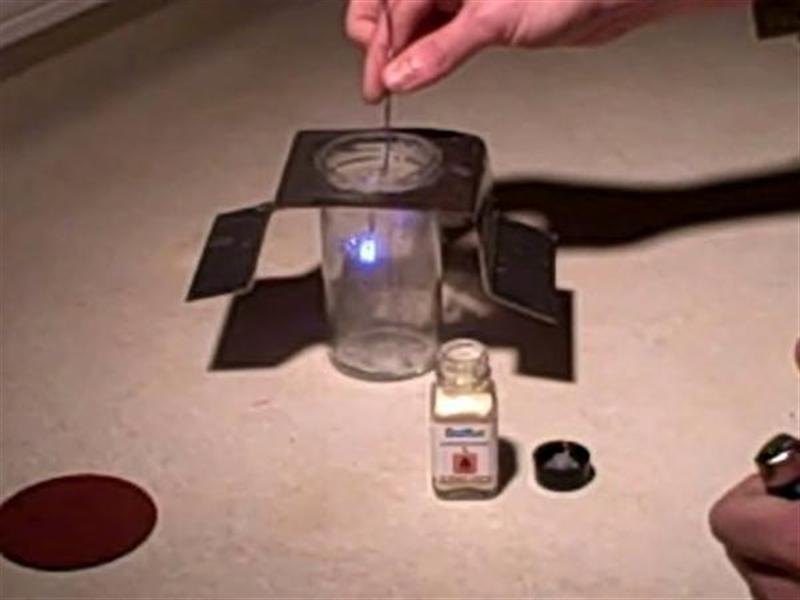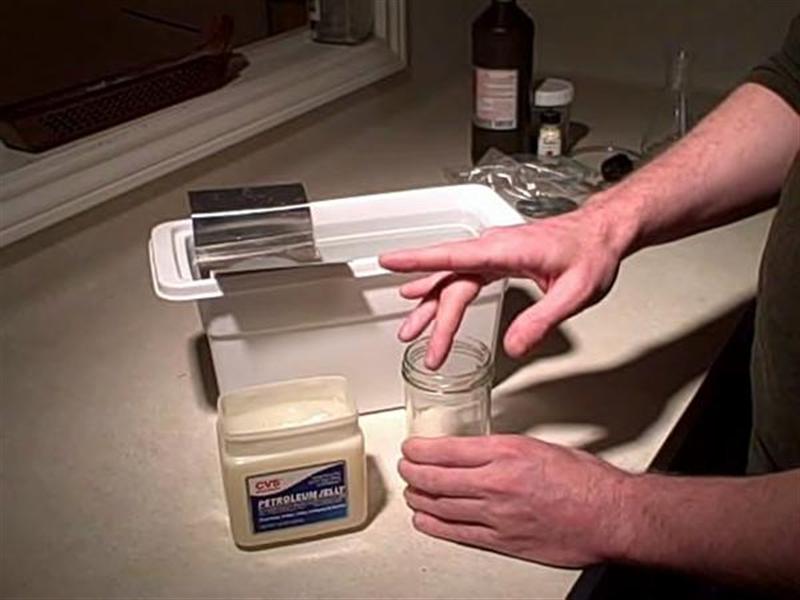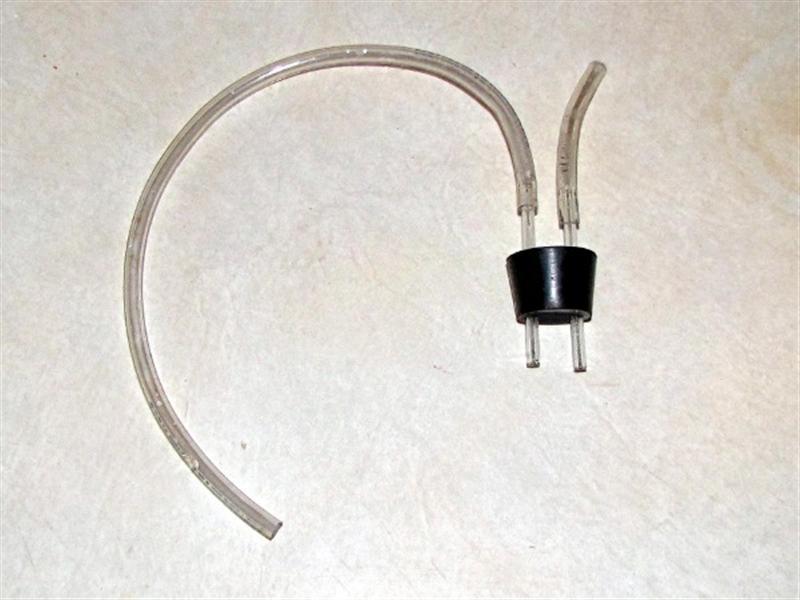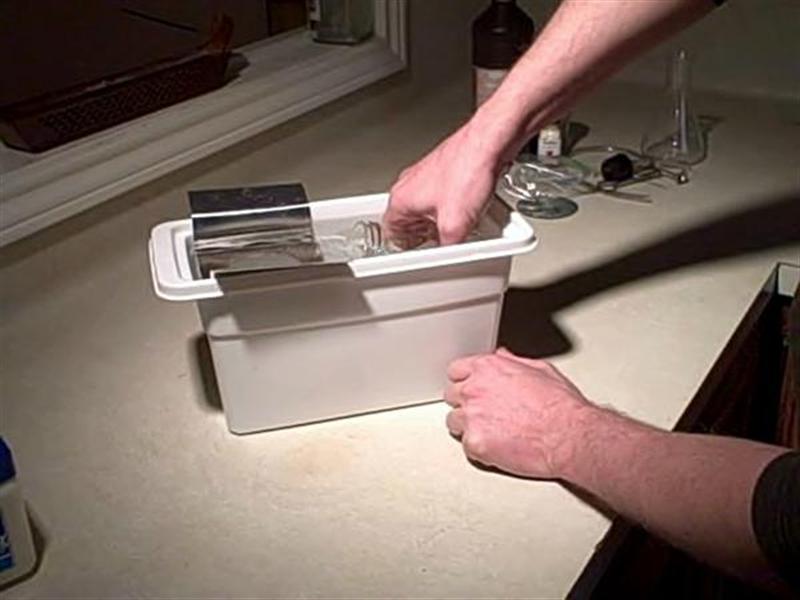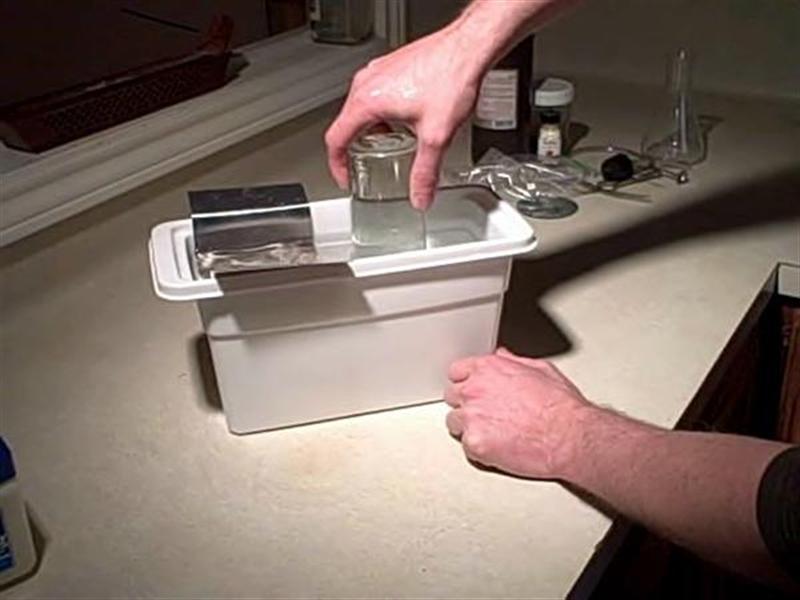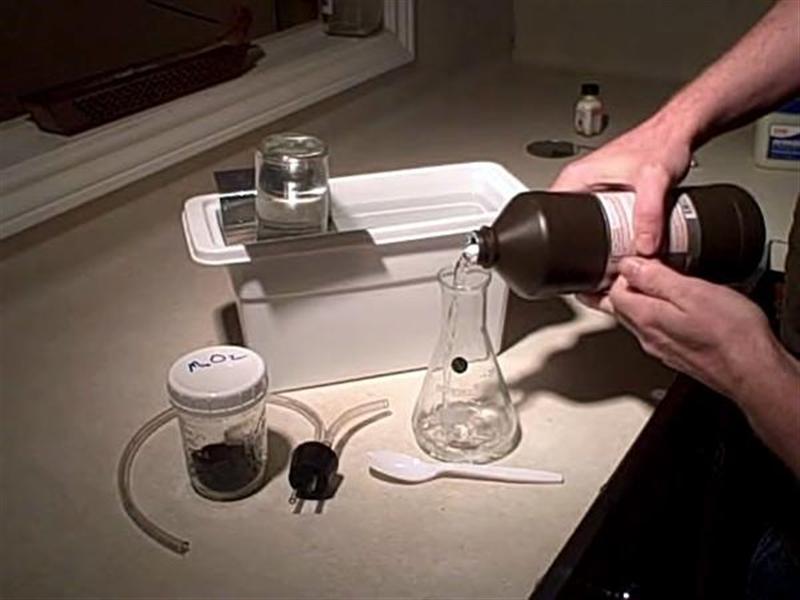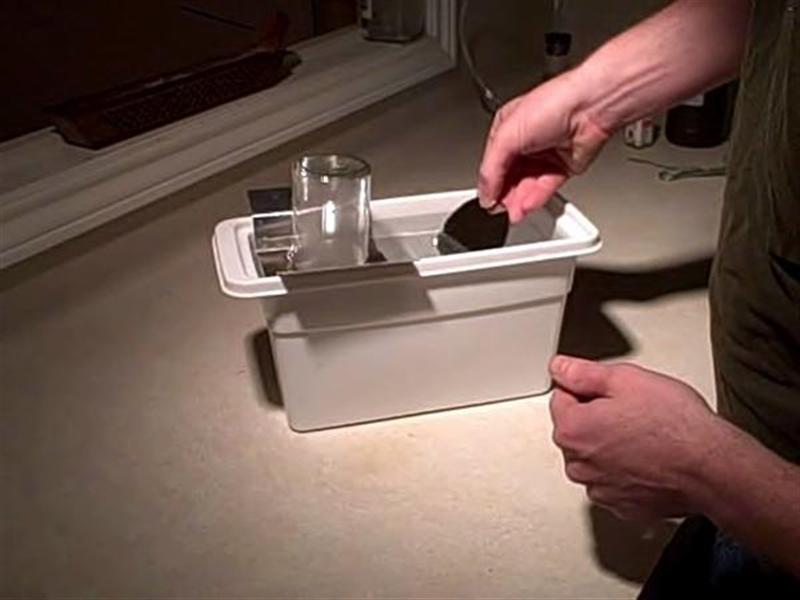My previous tutorial shows how to construct a simple sheet metal “bridge,” which, in combination with an ice cube bucket and an olive jar, makes an effective pneumatic trough for collecting gas samples over water. This tutorial shows how to use this apparatus to generate and collect pure oxygen, and how to use that oxygen to observe the brilliant blue flame of sulfur oxidation. The manganese dioxide catalyst used in this process is easily recovered from a spent zinc-carbon battery.
Projects from Make: Magazine
Collect Oxygen Over Water
Collect pure gas samples with simple equipment.
